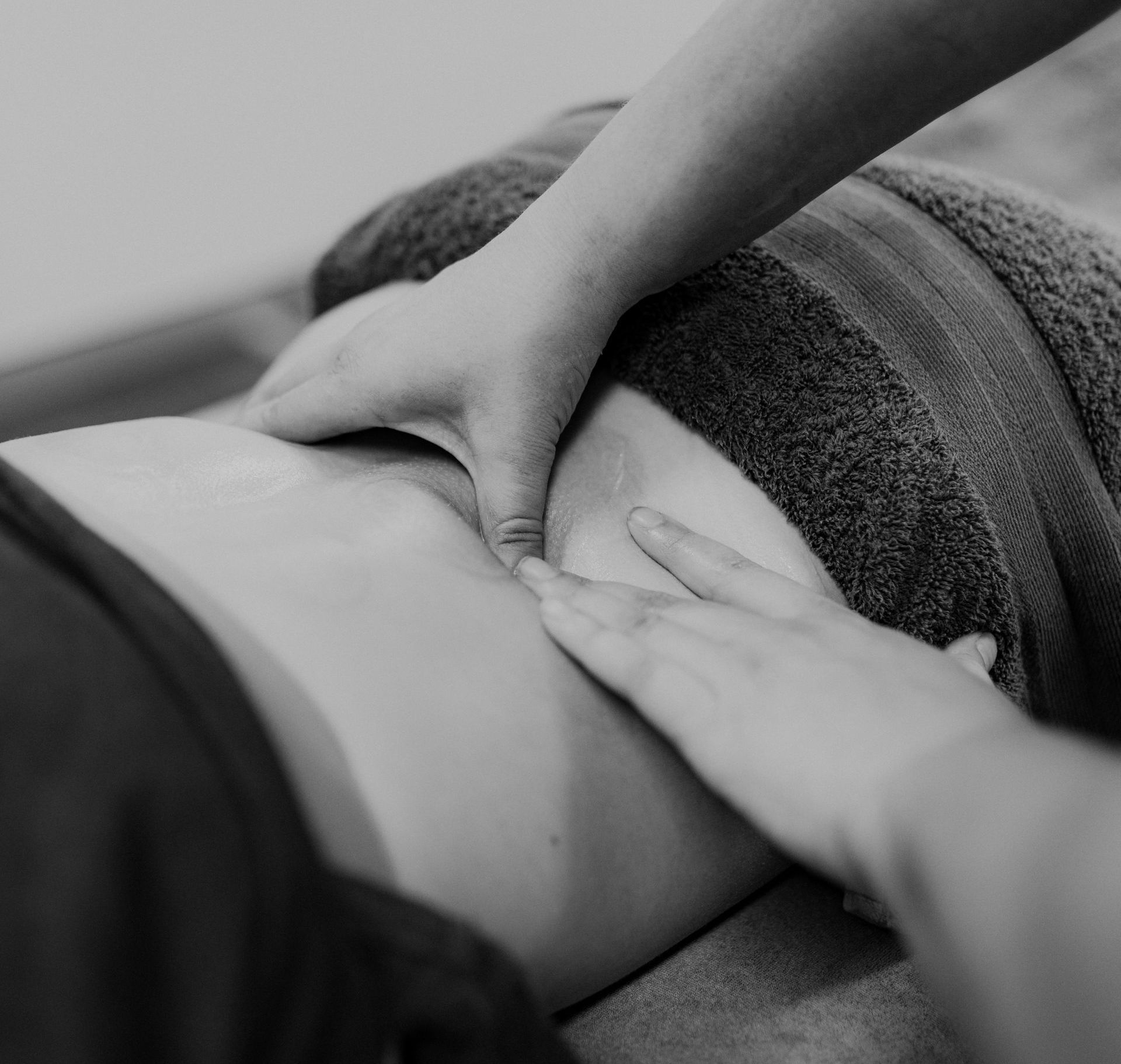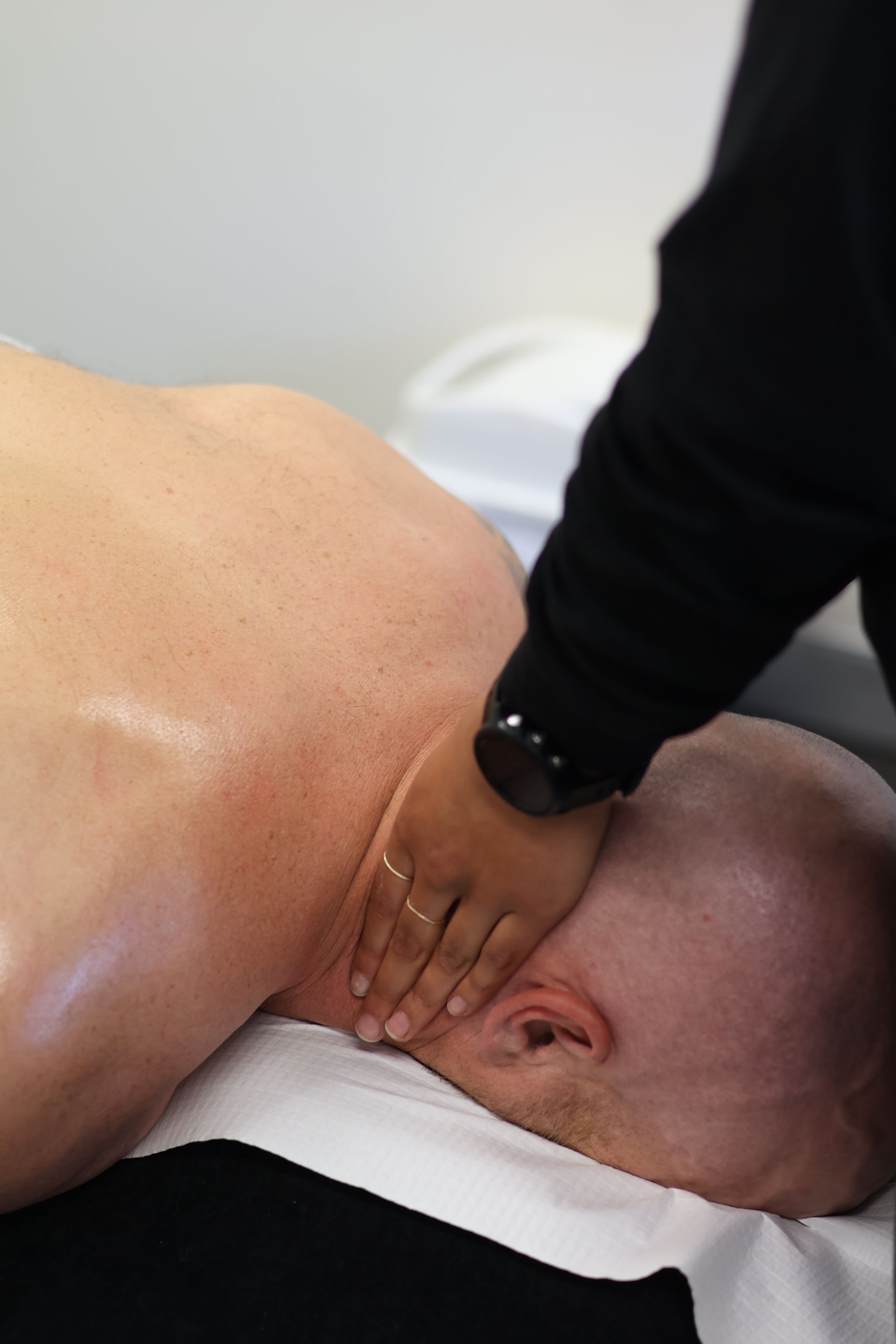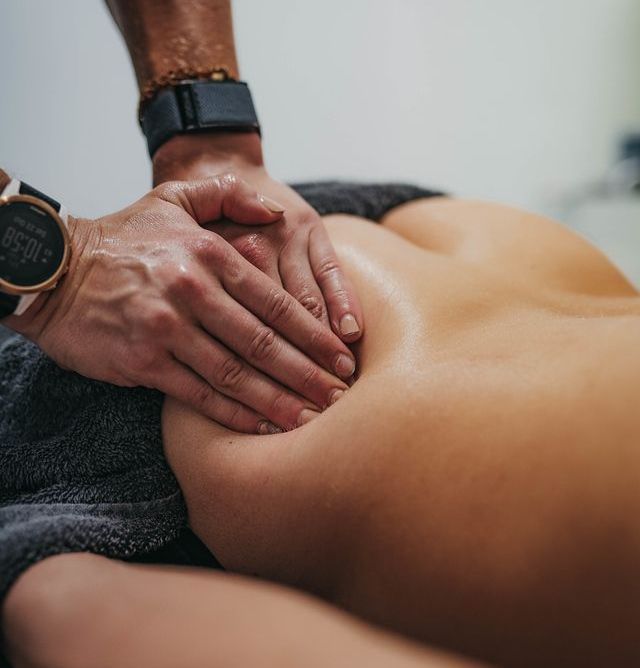Manual Therapies
Manual therapies form an important part of our physiotherapy treatments, and can help enhance injury recovery, relieve pain and reduce tension.

Joint Mobilisation
Joint mobilisation is a manual therapy technique which aims to address joint pain, stiffness, and restricted movement. It involves the passive movement of a joint through its natural range of motion.
The goals of joint mobilisation include:
Improving Joint Mobility: Joint mobilisation aims to enhance the range of motion in a joint that may be limited due to injury, inflammation, or other musculoskeletal conditions.
Reducing Pain: The gentle movements performed during joint mobilisation can help alleviate pain associated with joint dysfunction.
Promoting Healing: By promoting better joint function and reducing pain, joint mobilization supports the body's natural healing processes.
Restoring Normal Joint Mechanics: Joint mobilisation techniques are designed to restore normal movement patterns and mechanics within a joint.
It's also worth mentioning that joint mobilisation is different from joint manipulation, which involves a quick and often high-velocity thrust to the joint. Joint mobilisation is generally characterised by slower, more controlled movements within the joint's natural range of motion.

Trigger Point Therapy
Trigger point therapy, also known as myofascial trigger point therapy or trigger point massage, is a therapeutic technique that focuses on identifying and releasing trigger points in muscles. Trigger points are tight knots or areas of tension within the muscle fibres that can be sensitive and cause referred pain or discomfort in other parts of the body.
During trigger point therapy, pressure is applied to these specific points to alleviate pain and promote relaxation in the affected muscle. The pressure is typically sustained for a period until the therapist feels a release or softening of the tissue.
The goals of trigger point therapy include:
Pain Relief: By addressing trigger points, therapists aim to reduce or eliminate pain associated with muscle tension.
Improved Range of Motion: Releasing tight knots in the muscles can help improve flexibility and range of motion.
Muscle Relaxation: The therapy promotes overall muscle relaxation, helping to alleviate muscle stiffness and tension.
Prevention of Future Discomfort: Regular trigger point therapy may help prevent the development of chronic pain or recurring muscle tension.

Myofascial Release
Myofascial release is a manual therapy technique that focuses on releasing tension and restrictions within the fascia, a connective tissue that surrounds and supports muscles, bones, and organs throughout the body. The fascia can become tight and restricted due to factors such as trauma, inflammation, or poor posture, potentially leading to pain, limited range of motion, and other musculoskeletal issues.
During myofascial release, gentle, sustained pressure is applied to the fascial system. This pressure is intended to facilitate the release of tightness and adhesions within the fascia, promoting improved flexibility, reduced pain, and better overall function. Myofascial release may involve direct manipulation of the fascia or indirect methods that influence the fascial system through body
positioning and movement. Key elements of myofascial release include:
Sustained Pressure: The therapist applies gentle and sustained pressure to specific areas of the fascia, allowing the tissue to release and elongate.
Stretching and Movement: Myofascial release may involve stretching and movement to enhance the flexibility and mobility of the fascia.
Feedback and Sensation: The therapist often relies on feedback from the client to identify areas of tension and monitor the tissue's response to the pressure.
Myofascial release is commonly used to address conditions such as myofascial pain syndrome, chronic pain, and soft tissue restrictions.
